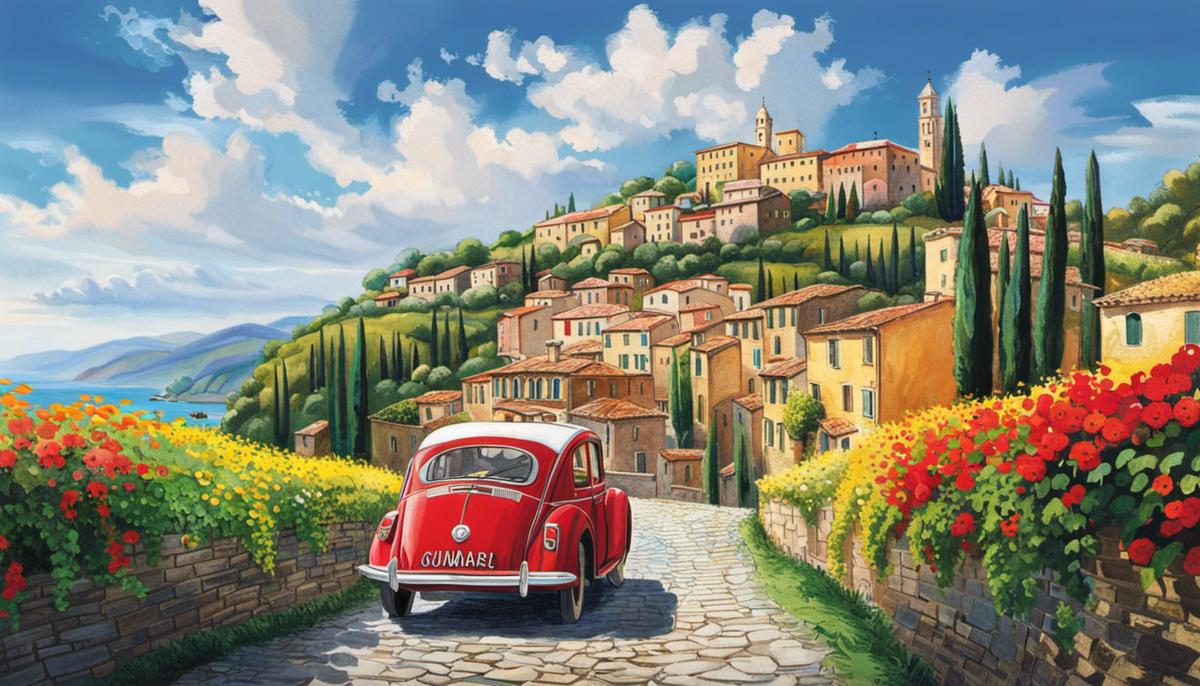Table of Contents
Introduction To Compositions For Viola
There are countless compositions for viola that have impacted the world of classical music. As an enthusiast or hobbyist taking a closer look at the viola, it is instrumental to familiarize oneself with some of its most popular compositions. In this article, I share several viola pieces that you can learn about.
Arpeggione Sonata by Schubert
Brief Overview of the Arpeggione Sonata by Schubert
The Arpeggione Sonata by Schubert is a compelling composition that is loved by viola enthusiasts worldwide. Originally, this piece was penned down for the arpeggione, which is a six-stringed musical instrument. However, due to the instrument’s obscurity, it gradually found its way to the repertoire of viola and cello players across the globe.
Romantic Style and Expressive Range
Arpeggione Sonata is recognized for its romantic style that is both intense and soulful. Its expressive range is widely admired among musicians and audiences alike. This sonata evokes a myriad of emotions as it unwinds from its captivating beginning to the thrilling finale.
Three Movements and Variety of Moods
The structure of the Arpeggione Sonata includes three amazing movements, each offering a unique mood. These movements allow the listeners to embark on an emotional journey, from soothing serenity to lively vigor, and ultimate catharsis.
Display of Viola’s Tonal Diversity
What makes this composition particularly fascinating for violists is that it showcases the full tonal diversity of the viola. It is seen as an exploration of the instrument’s potential, illustrating various tones and textures that can be extracted from a viola.
Popularity in Viola Repertoire
Arpeggione Sonata by Schubert holds esteemed value in the viola repertoire. It is a dynamic piece that highlights the capabilities of the viola, resulting in its popularity among violists worldwide.

Harold in Italy by Hector Berlioz
Berlioz’s Unique Creation: Harold in Italy
Harold in Italy by Hector Berlioz is a renowned piece in the world of viola compositions. Interestingly, this piece was crafted specifically for Niccolò Paganini’s unique viola and orchestra. Known for his phenomenal violin skills, Paganini commissioned Berlioz to compose a symphony, hoping to showcase his viola skills in a composition designed for him. The result of this collaboration was a sweeping four-movement symphony that featured the viola as a protagonist, rather than merely as part of the orchestra.
A Symphony with a Story
Instead of adopting the standard concerto format, Berlioz opted for a symphonie program, a form he pioneered that tells a story through music. The viola represents Harold, the wandering protagonist, and each of the symphony’s four movements represents a different chapter of Harold’s trek across Italy. The viola interplays with the orchestra, painting a vivid picture of Harold’s varied emotional states, effectively transforming the concerto into a rich narrative symphony.
The Impactful Movements
Each movement of Harold in Italy captures a unique emotion and experience. The first movement, Harold in the Mountains, presents a melancholic Harold feeling isolated from the festive mountain dwellers. The second movement, March of the Pilgrims, symbolizes Harold following a procession, which gives him some solace. The third movement, Serenade of an Abruzzi Mountain-Dweller to his Mistress, portrays an encounter where Harold is both observer and participant. Finally, the fourth movement, Orgy of Brigands; memories, sees Harold amidst a wild party filled with bandits.
The Joy of Melody
The highlighting feature of the Harold in Italy composition is its blend of rich melodic lines and expressive solos. Berlioz crafted the viola part not as a constant exhibition of technical virtuosity – which was common in concertos of that time – but as a deeply expressive element woven into the entire body of the symphony. The solos do not merely stand on their own but are an integral part of the overall narrative, enhancing the listener’s experience and connection with the piece.
Unrivaled Legacy
Since its premiere, Harold in Italy has successfully gone down in history as a beloved symphony among classical music aficionados. Its unique concept, vibrant narrative, exceptional melody, and brilliant viola solos make it a dream for violists and a joy for audiences. Harold in Italy continues to captivate and is one of the most cherished compositions ever written for the viola.

Sinfonia Concertante in E flat major by Mozart
Mozart and the Viola: A Perfect Blend
An interesting fact about Mozart is that his viola-playing skills were reportedly quite impressive. Surprisingly underrated in a conventional orchestra setting, the viola makes a grand appearance in one of Mozart’s most renowned compositions – the Sinfonia Concertante in E flat major, where it shares the spotlight with the violin.
A Dual Concerto: Equal Footing for Violin and Viola
This symphony is composed considering a perfect balance between the violin and viola by providing them with solo parts. This was a significant departure from the norm because viola usually played a secondary, supportive role in orchestras. Here, Mozart gave the instrument equal importance with the violin, bringing out an impressive orchestral texture.
Melodies and Dialogues: A Lively Interaction
The interaction captured in this piece between the violin and viola is akin to a lively, witty conversation. The instruments respond to each other, often playing similar melodies but in their own unique style thereby creating a captivating blend of sounds. The lively dialogue is one of the major factors that make this piece stand out from Mozart’s other compositions, and the reason why it’s beloved among viola enthusiasts worldwide.
Depth and Complexity: A Signature Mozart Style
The Sinfonia Concertante in E flat major is not just popular for the obvious violin and viola interaction, but also for its depth and complexity which is a signature Mozart style. The variations in the music themes, shifting tonalities, and the emotional depth of the composition is what makes it an important part of every viola player’s repertoire, allowing them to showcase their versatility as musicians.
A Glorious Display: Of Mozart’s Exceptional Talent
A truly remarkable aspect about this symphony is the way Mozart illustrates his exceptional talent through the depth of his composition and his understanding of each instrument’s potential. By pairing the violin and viola in delightful conversational music, Mozart managed to celebrate the unique qualities of these two string instruments, thus creating an exquisite pleasurable piece for viola players and enthusiasts.

Conclusion
The euphony of the viola in these compositions – from the emotional range of Schubert’s Arpeggione Sonata, the expressive narrative in Berlioz’s Harold in Italy, to the lively dialogue in Mozart’s Sinfonia Concertante – enables a deeper understanding of its musicality and technical demands. By immersing one’s musical journey into these pieces, a viola enthusiast invests in unlocking the profound beauty and unique voice of this often-underappreciated instrument. Each piece provides an opportunity to explore different techniques, moods, and expressions – all tailored to enhance a diverse skill set that ultimately paves the way to becoming a versatile violist.
Additional Reading
Take some time to check out our other articles:
- The Evolution of Film Music: From Silent Films to Streaming
- Mixing on Headphones vs Studio Monitors: Pros and Cons
- How Minimalism Changed Modern Composition: Glass, Reich & Adams
- Forgotten Romantic Composers Worth Discovering
- Women in Jazz: From Mary Lou Williams to Esperanza Spalding
Breve Music Studios publishes music to Spotify, YouTube Music, Amazon Music and more. Follow our pages on Facebook, Instagram, Twitter, TikTok, and YouTube.
Listen to our ensembles: Breve Orchestra, Breve Music Ensemble, Breve Low Brass Ensemble, Breve Woodwind Ensemble, and Jermaine Harris on Spotify.

